Pearl RearVision Backup Camera Review


CARS.COM — The effectiveness of backup cameras is well-documented, so much so that starting May 1, 2018, they’ll be federally mandated standard equipment on new cars. If your car doesn’t have one from the factory, a quick Amazon search provides an overwhelming array of options.
One of the newest is from Pearl Automation. Founded by former Apple iPod and iPhone team leaders, the company recently launched a $499.99 wireless backup camera called RearVision. What’s unique about RearVision is that it installs in minutes and leverages hardware you likely already have: a smartphone and your car’s diagnostic port. How well does it work?
Related: Feds Say New Cars Must Have Backup Cameras By Model-Year 2019
A typical aftermarket backup camera is an invasive installation hardwired into the vehicle’s systems; wires run from the rear camera to the front display and are tapped into power/reverse signal sources. Pearl Auto RearVision is a wireless alternative that sends its image to a compatible Apple or Android smartphone via Wi-Fi and Bluetooth and requires no installation wiring. Intrigued by this noninvasive alternative, we reached out to Pearl for a test unit and installed RearVision on Cars.com’s long-term 2013 Volkswagen Jetta Sportwagen TDI.
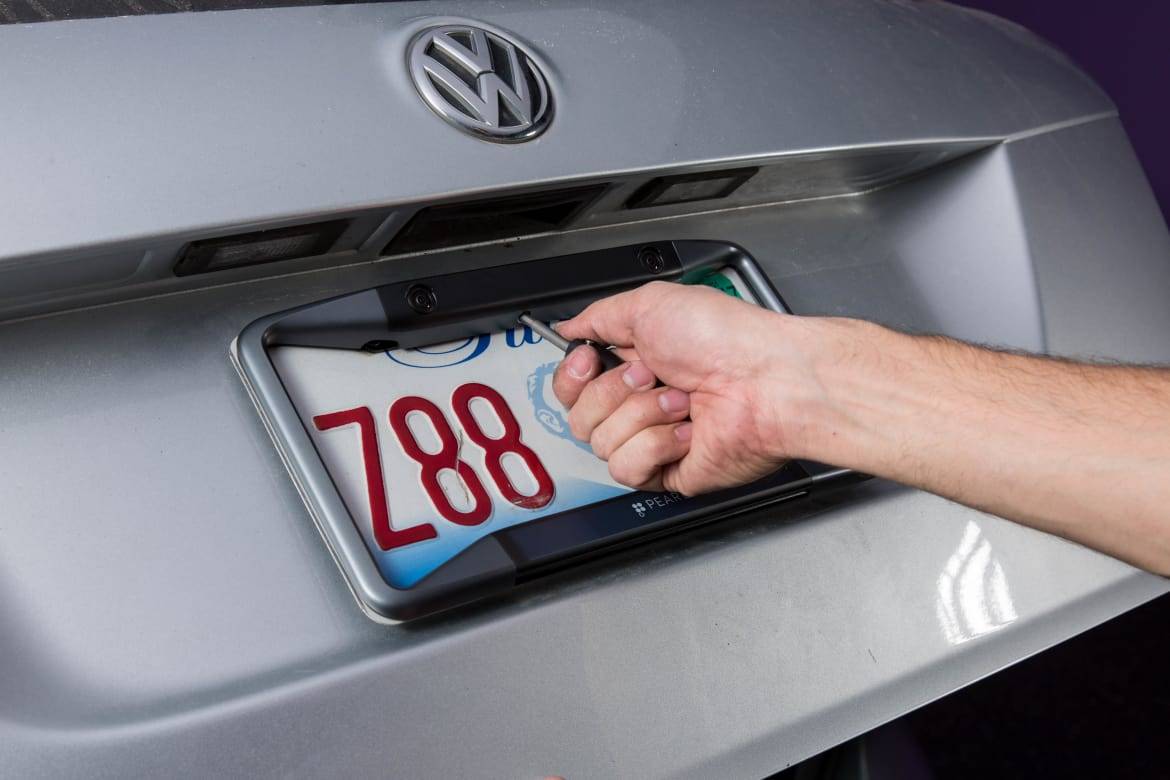
The meat of the RearVision is a rear license-plate frame made up of two high-definition cameras with a wide 180-degree field of view. One camera is tuned for daytime images and the other is an infrared-sensitive camera for night operation. The assembly is powered by an integrated solar panel — that’s right, this sucker is powered by the sun — and there’s a backup USB cable in case it runs out of juice, plus a battery monitor in the Pearl application.
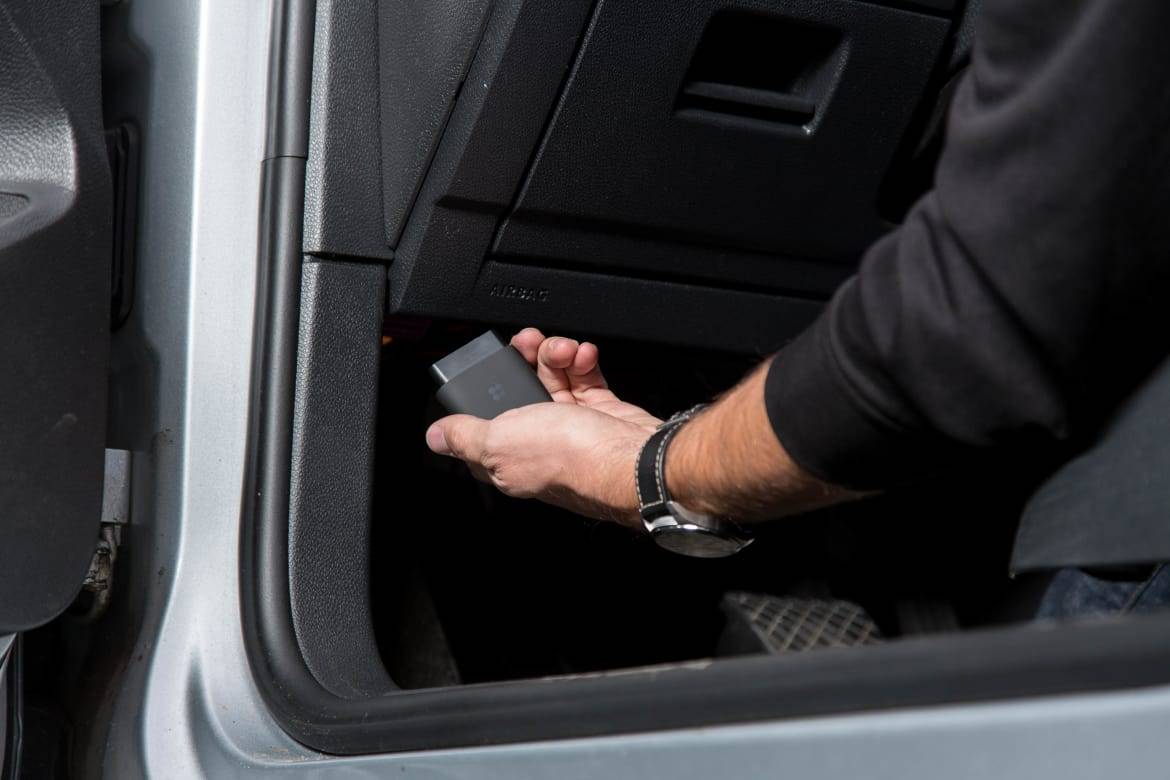
The brainpower behind the RearVision is a plug-in adapter for the on-board diagnostic port included on all cars model-year 1996 and newer. “We send both streams to the car adapter, which has a beefy eight-core Samsung processor. It’s the same processor as the Samsung Galaxy S5 [smartphone], so it’s basically like a smartphone without the screen,” said Pearl Auto’s head of product, Tyler Mincey.
This is where you start to realize the RearVision is more than just a simple backup camera. In function, that means obstacle detection: RearVision monitors the camera stream and provides proximity alerts when you’re reversing straight back as well as a cross-traffic function that sounds an alert when a car or person is sensed approaching from the right or left while reversing.
All visuals display in the Pearl Apple or Android application downloadable in respective app stores.
Easy Install
Just about everything needed is included in the box except for a smartphone and tool to remove the existing license plate and bracket. The camera frame, mounting bracket, phone mount, OBD adapter and security tool are all included. Each part feels high-quality, especially evident by the heft of the aluminum camera frame.
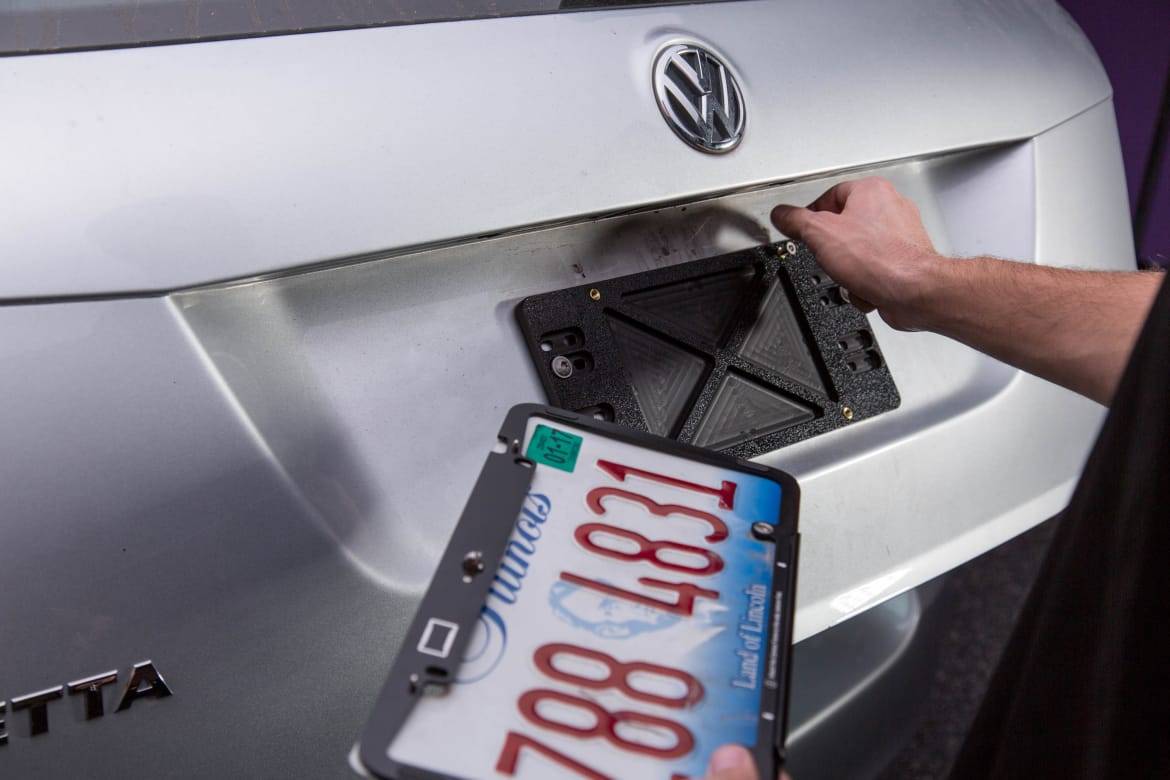
The install is fairly straightforward. There’s a backing plate that installs to the car; the existing license plate and camera frame then installs to a RearVision bracket, which mounts to the backing plate. The camera frame is secured to the bracket using a proprietary theft-deterrent fastener and a supplied tool. Beyond mechanical security measures, the camera frame and adapter are electronically paired together at the factory and will not work independently. Pearl is so confident theft is a non-issue, it’ll replace a stolen camera frame at no charge.


While it doesn’t come with a phone, RearVision comes with Pearl’s in-house designed phone mount that clips to a climate vent. A stick-on metal pad mounts to your phone or case and connects with the magnetized mount. Mincey said having the phone this close to a magnet isn’t an issue because the part that’s on your phone is just a metal plate.
“It won’t cause any long-term damage to the phone,” he said. “On Android phones, it can sometimes throw off the compass a tiny bit. Sometimes there might be a heading difference.”
Clear, High-Quality Images
The camera’s definition is remarkable compared with the dingy display of the preexisting aftermarket backup camera on our long-term Volkswagen Jetta. Backup cameras with this kind of clarity are typically reserved for high-end luxury cars, so it was surprising to see the high-quality feed coming through my phone in almost GoPro-like definition. The camera feed boots up quickly in the app and transfers without lag or distortion. At night, the image coming from my dimly lit street was defined enough to see the curb and car behind me with great clarity.
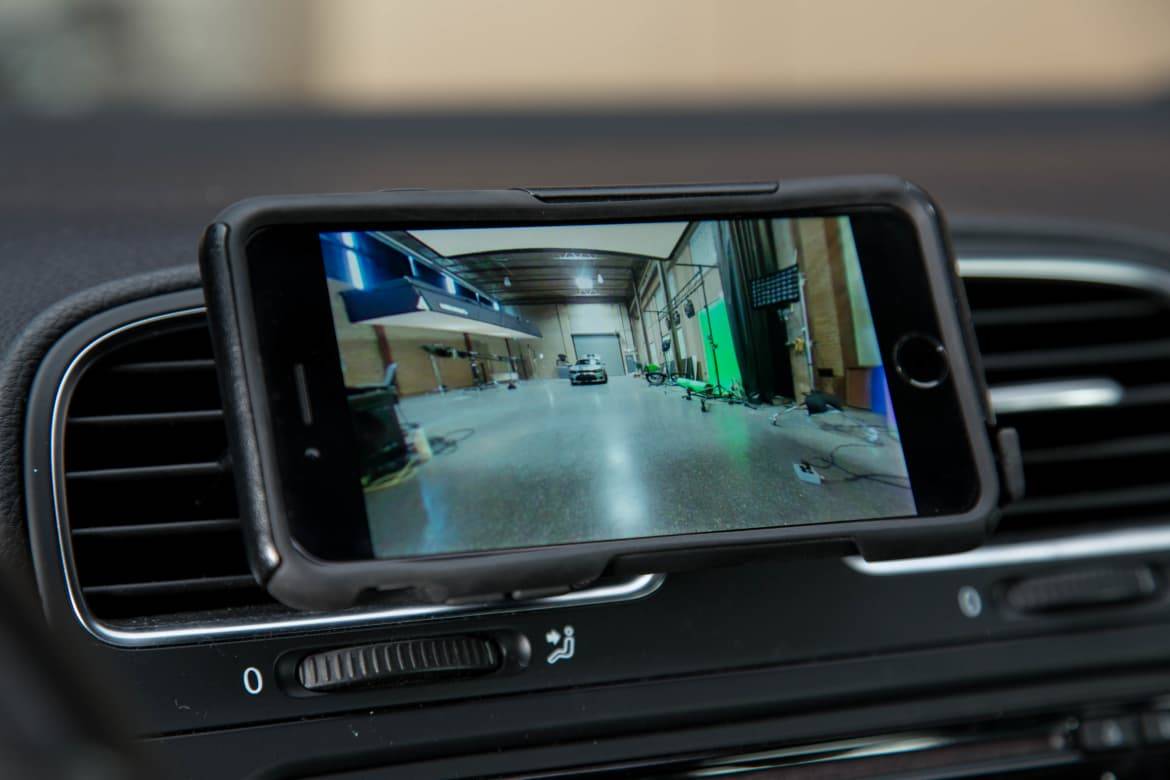
Obstacle detection works better than I anticipated for not being radar-based like a factory system. The first alert chimes at about 6.5 feet from an object, creating a visual ripple in the display and an audible alert from the OBD adapter’s internal speaker. The same reminder pops up again at 4 feet; at 2 feet, the display flashes a red perimeter warning and a continuous beep warns that this is your last chance to brake before reversing into something solid. I only played with the cross-traffic detection in our studio, but it triggered consistently when a pedestrian walked into the camera’s view.
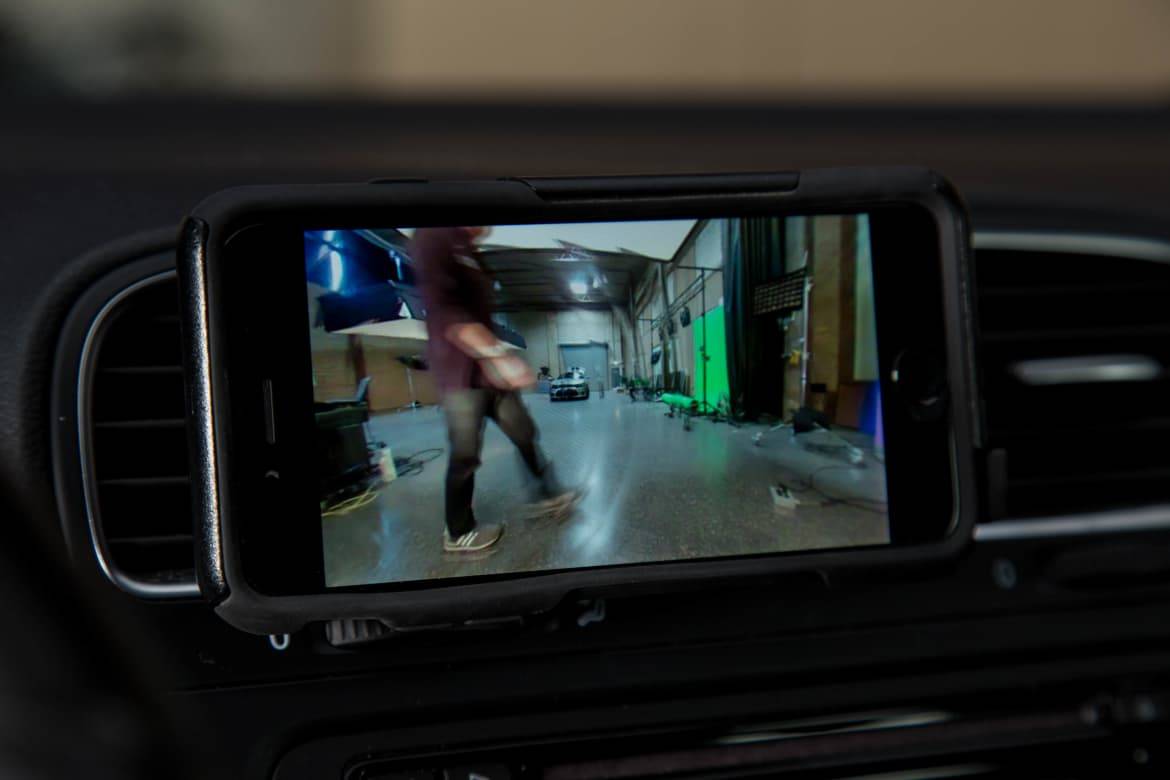
While the camera’s quality and obstacle detection get glowing evaluations, there are still some quirks that make me question the wireless approach, though it sounds like future updates may address some of those concerns. Right now, RearVision doesn’t recognize when a car is in reverse.
“It’s something we’re technically capable of doing,” Mincey said, “but it’s a little bit make- and model-dependent. That’s an area we’re working on rolling out car to car.”
In my testing with an iPhone 6, I had to manually open the app every time I wanted to use the camera. Future updates will provide a notification for Apple users when they enter the car, and currently, you may see a notification on the lock screen in the lower left corner if you frequently use the iOS app. There’s a little bit more flexibility with the Android platform, and an over-the-air update to come will include an auto launch feature that starts the app as soon as you secure the phone in its mount. Over time, Mincey said Pearl will be able to leverage triggers like reverse.
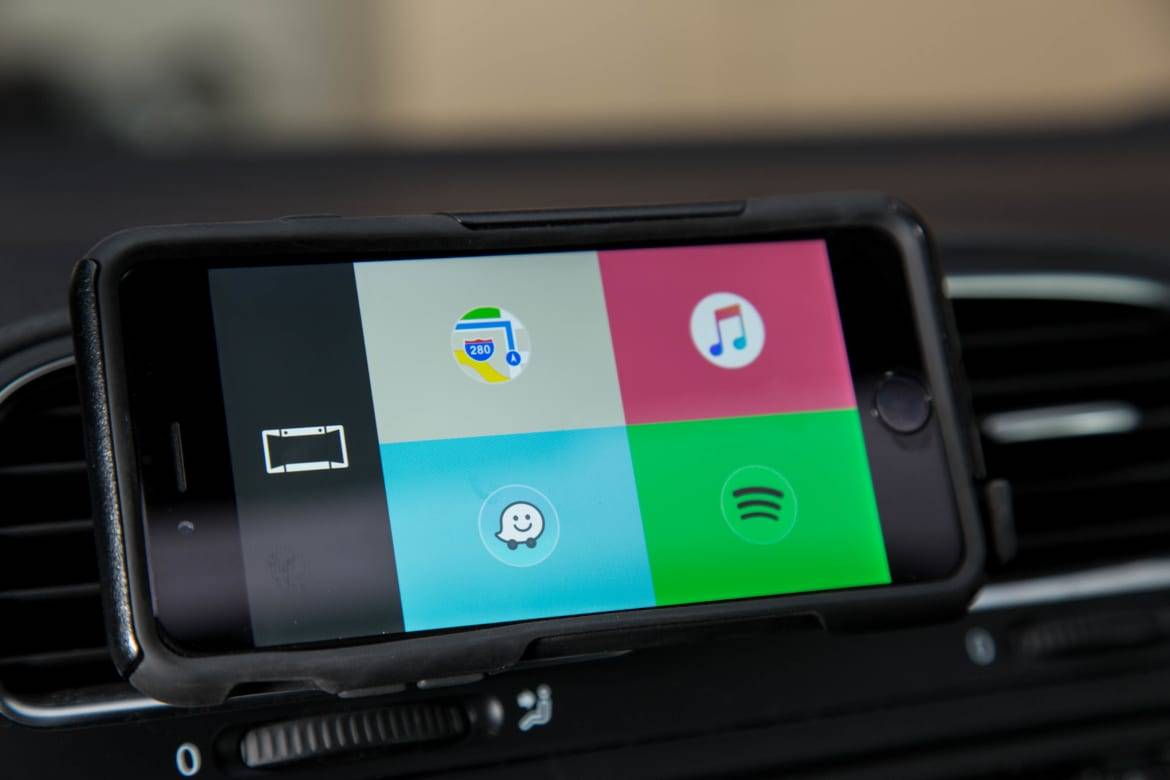
Within the app is a built-in app launcher that helps minimize the number of steps it takes to get back to the camera display. By having customizable shortcuts in the app to programs including Spotify, Apple Music, Google Maps and Waze, the camera is just one tap away.
Another missing feature many factory backup cameras have are reverse guidelines, which overlay the image to show distance. Pearl is rolling out an update in November that will add these guidelines, which sound like they’ll be more than just a fixed set of guidelines like our VW’s aftermarket system. According to Mincey, the over-the-air update will include guidelines that are contextual and smart, so instead of awkwardly laying on top of the display, they’ll react to objects in the screen when reversing.
Is It Worth the Money?
At $499.99, early adopters might not get the most robust product Pearl can offer. Not being able to trigger the camera by selecting reverse is a big head-scratcher. There are workarounds and new habits can be formed but, until that functionality is added through updates, it’s certainly not as convenient as simply being able to put the car in reverse and see what’s behind the car.
Pearl RearVision gives us a glimpse of its capabilities, which are impressive even if they’re not fully tapped at the moment. My iPhone 6’s screen is larger than our VW’s navigation touchscreen as well as the installed aftermarket backup camera screen, so leveraging a large, high-quality monitor drivers already carry around with them is convenient. Plus, it’s nice knowing you can painlessly transfer the system to another car.

Managing Editor Joe Bruzek’s 22 years of automotive experience doesn’t count the lifelong obsession that started as a kid admiring his dad’s 1964 Chevrolet Corvette — and continues to this day. Joe’s been an automotive journalist with Cars.com for 16 years, writing shopper-focused car reviews, news and research content. As Managing Editor, one of his favorite areas of focus is helping shoppers understand electric cars and how to determine whether going electric is right for them. In his free time, Joe maintains a love-hate relationship with his 1998 Pontiac Firebird Trans Am that he wishes would fix itself. LinkedIn: https://www.linkedin.com/in/joe-bruzek-2699b41b/
Featured stories




